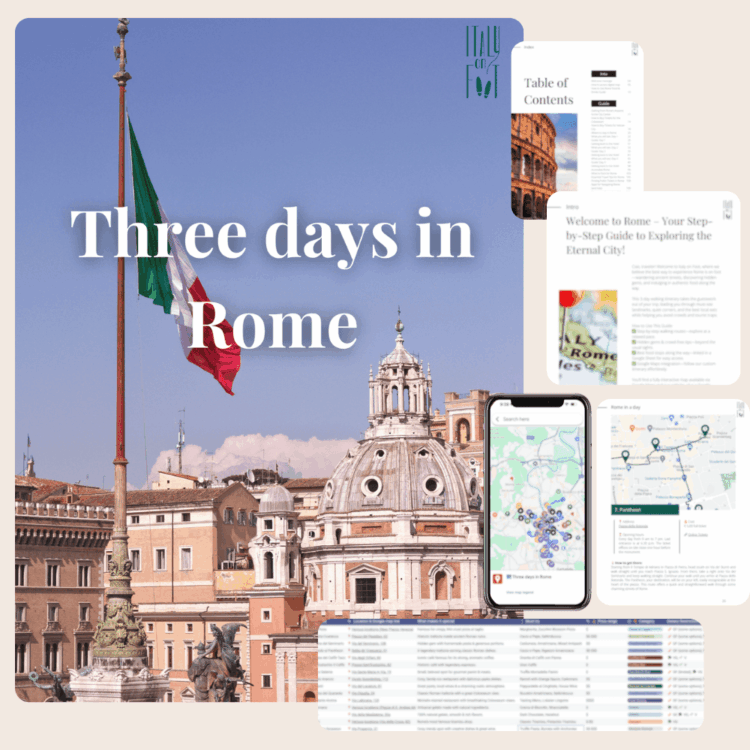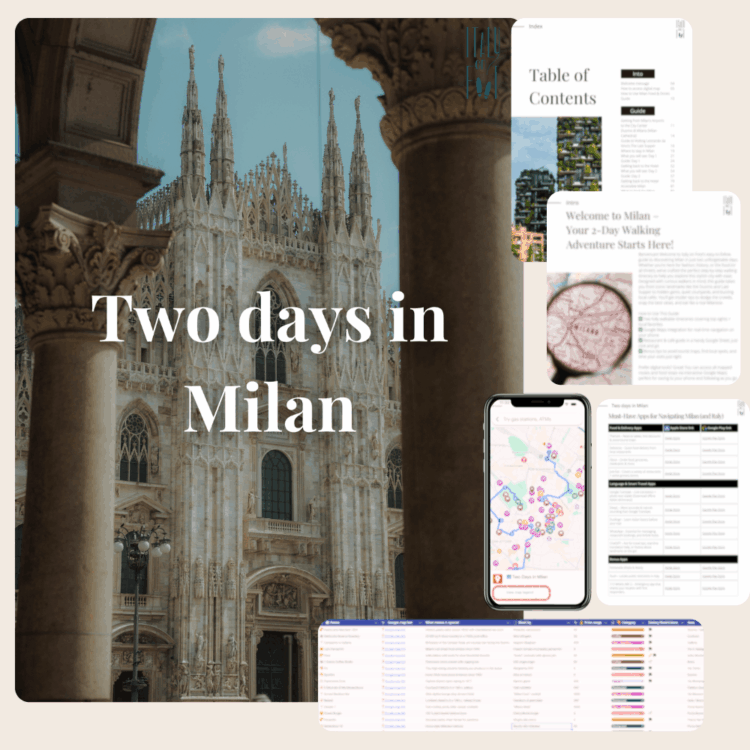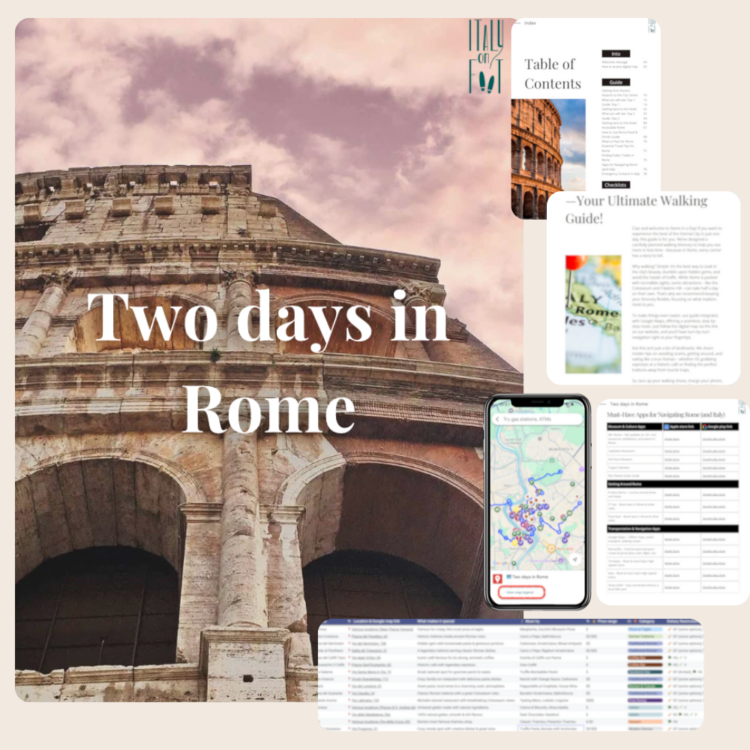When you are planning a trip to Italy, there’s no better way to explore this stunning country than by hitting the streets and taking a self-guided walking tour through its historic alleyways and modern shopping districts. But did you know that you can also make your shopping sprees more economical? Yes, with “Italy’s Tax Refund for Tourists,” your purchases could be more affordable than you might think. Many travelers don’t realize that they can reclaim the VAT (Value Added Tax) they spend on goods while exploring this picturesque land. This article demystifies the process and helps you navigate your way to savings, making your Italian journey even more enjoyable.
Who Can Benefit from Italy’s Tax Refund for Tourists?
The first step in taking advantage of the VAT refund system is understanding eligibility. This benefit is primarily for visitors from outside the European Union. To qualify, you need to ensure that each store receipt amounts to more than € 70,01. This might seem like a lot, but when you’re buying some of Italy’s fine leather goods, luxurious fashion, or intricate art pieces, you can easily reach this minimum purchase amount. And remember, the items you purchase need to stay unused until you leave the EU.
Once you’ve made your qualifying purchases, the next essential step is to ask the retailer for a tax-free form. This form is critical for claiming your refund later. Shopkeepers are usually familiar with the process and will be more than willing to help. You need to fill out this form and keep it along with your receipt, as losing either of them can jeopardize your refund.
Processing Your Tax Refund: Customs and Beyond
So, you’ve done your shopping and are preparing to return home. Before you can get your VAT refund, your tax-free form must be stamped by a customs officer at your last point of departure from the European Union. Whether you’re flying out from a major airport like Rome Fiumicino or Milan Malpensa, or taking a train or boat, you’ll need to allocate extra time before your departure to get this done. The customs desk can get quite busy, especially during peak travel times, so it’s wise to arrive a few hours before your scheduled departure.
At customs, you’ll need your tax-free form, the goods you purchased, and your passport. The goods should be unused and readily available for inspection. The customs officer will stamp your form, and then you’re halfway through the process. In some places, like Rome Fiumicino and Milan Malpensa, you can even get your customs stamp at special “Tax Refund Priority Desks,” saving you time and hassle.
Claiming Your Credit: Cash, Card, or Cheque?
After you’ve got that crucial customs stamp, it’s time to decide how you want to receive your VAT refund. There are generally three options: cash, credit card, or international cheque. If you prefer to get your refund in cash, many airports have tax-refund service kiosks where you can finalize this process on the spot. This method is quite convenient if you want immediate access to your funds, and it’s worth checking if your departure airport offers this service.
If you’re okay with waiting a bit, you can opt to get your refund via a credit card or cheque. You must mail the stamped tax-free form back to the retailer or a tax refund service. Most stores provide you with a prepaid envelope for this purpose, making it more straightforward. Keep in mind, though, that refunds to credit cards can take between 2 to 3 months, and there might be additional fees, particularly for international cheques.
Step-by-Step Guide to Claiming VAT Refund in Italy
If you’re eager to make the most of “Italy’s Tax Refund for Tourists” during your visit, following these step-by-step instructions will ensure you claim your VAT refund with ease. This straightforward guide will take you through everything you need to know, from making your purchases to walking away with your tax refund.
Step 1: Ensure Eligibility and Meet Minimum Spend
To start, verify if you are eligible for the VAT refund. You must be a resident of a non-European Union country and make purchases of more than €70,01 in a single store on the same day. Keep this threshold in mind as you shop, especially if you are eyeing high-end fashion, electronics, or unique Italian crafts. As you shop, remember that the items must remain unused until you exit the EU.
Step 2: Request the Tax-Free Form at the Store
After finalizing your purchase that meets the minimum amount, ask the store staff for a tax-free form. Shop assistants are generally very familiar with the process and will help you fill out the necessary details. You will need to provide your personal information, including your name, address, and passport number. Ensure you collect both the completed tax-free form and your original receipt, as both are essential for your refund process.
Step 3: Keep the Items Unused and Keep Documents Safe
It’s crucial to keep all your items unused until you leave the European Union. Customs officers may ask to inspect your purchases, and if they show signs of use, you may not get your refund. Keep your tax-free forms and receipts safe; losing them can complicate or nullify your refund claim.
Step 4: Budget Extra Time for Customs
On the day of your departure, budget for extra time at the airport (or train station/port if applicable). You will need to get your tax-free forms stamped by a customs officer. Arrive a few hours before your departure time to account for any potential delays at the customs office, especially during peak travel periods.
Step 5: Head to the Customs Desk with Required Items
At the customs checkpoint, present your passport, tax-free forms, and your unused purchases to the customs officer. Make sure all items are easily accessible for inspection; this could mean keeping them in your carry-on luggage if feasible. After verifying your documents and purchases, the customs officer will stamp your forms, validating your eligibility for the VAT refund.
Step 6: Choose Your Refund Method
You now have options for how to receive your VAT refund. Here’s a closer look at the available methods:
- Cash Refund: Immediately receive cash at the airport’s tax-refund kiosk. Many major airports like Rome Fiumicino or Milan Malpensa have these facilities, making it a quick and convenient option.
- Credit Card Refund: Opt for the refund to be credited back to your credit card. This process takes about 2-3 months and may include additional fees. However, this can be convenient if you prefer not to carry extra cash.
- International Cheque: Receive an international cheque in a foreign currency. This might involve service fees and also take a few months to process. You can choose this option if you prefer dealing with cheques.
Step 7: Mail the Customs-Stamped Form
If you choose to receive your refund via credit card or cheque, you will need to mail the customs-stamped form back to the retailer or tax refund company. Use the prepaid envelope provided by the store to ensure it reaches the right destination. Make sure to drop this in a mailbox before you depart Italy, or soon after, if mailed from home.
Step 8: Wait for Your Refund
For cash refunds, the process ends with Step 6, and you receive your money instantly. For credit card and cheque refunds, you’ll need to wait for the processing period. Keep an eye on your mailbox or your credit card statement to confirm the refund has been processed and credited.
Step 9: Track Your Refund
Some retailers or tax refund companies offer tracking services for your refund status. If available, use these services to keep track of when the refund will be credited to your account or when you can expect the cheque to arrive.
By following these steps, you can effectively navigate the process of Italy’s Tax Refund for Tourists, making your travel and shopping experience in Italy even more memorable. While the process requires some effort and patience, the financial benefits and added enjoyment to your trip are worth it.
Every journey through Italy’s streets and markets can bring both joy and savings, making your travel experience more rewarding. So next time you’re in Italy, give this tax refund process a try and enjoy both the beauty of the country and the extra value you can gain from your purchases. Happy travels and happy savings!



